Meet the Gentle Giant That Can Save Lives and Cuddle Your Kids: The Incredible Newfoundland Dog
Looking for a dog that’s strong enough to rescue a person from drowning but sweet enough to babysit your kids? Say hello to the Newfoundland dog, also known as the “Newfie” — a massive ball of fluff with a heart of gold.
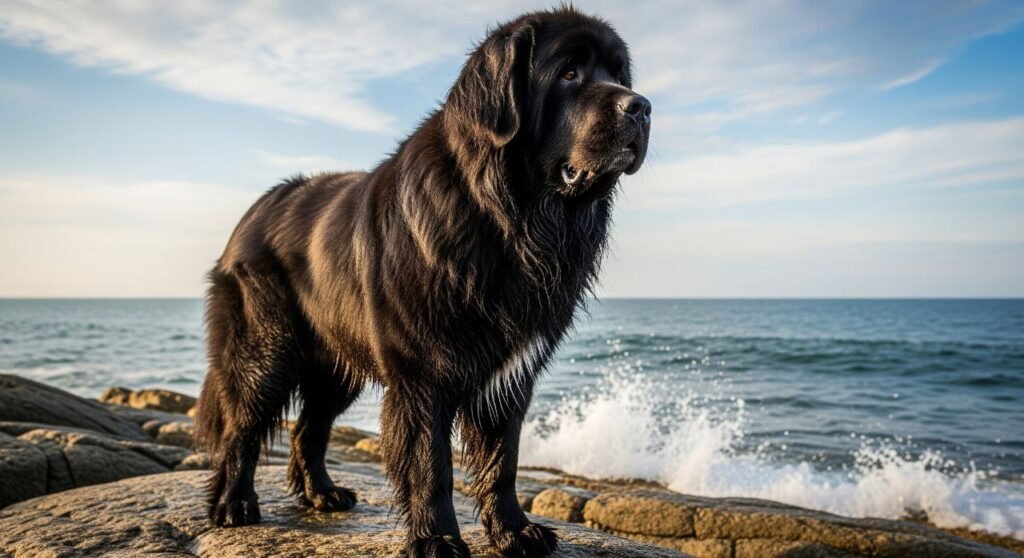
A Hero From the Cold Shores of Canada
Originally from the island of Newfoundland in Canada, these gentle giants were once the right-hand (or paw!) helpers of fishermen. Their job? Hauling nets, carrying loads, and even diving into icy waters to save people from drowning.
They’re believed to be descendants of native Canadian dogs mixed with European working breeds like the Great Pyrenees, giving them both strength and smarts.
What Do They Look Like?
| Feature | What You Need to Know |
|---|---|
| Size | Huge! These are large to giant dogs. |
| Weight | Between 100–150 lbs (45–68 kg) |
| Height | Around 26–28 inches tall (66–71 cm) |
| Coat | Thick, waterproof double coat |
| Colors | Black, brown, gray, or Landseer (white with black patches) |
| Lifespan | 8–10 years |
With their giant heads, soft eyes, and droopy ears, they look like something out of a fairy tale — and yes, they have webbed feet for swimming!
A Big Dog With an Even Bigger Heart
Nicknamed the “gentle giant”, the Newfoundland is known for its calm, loving nature.
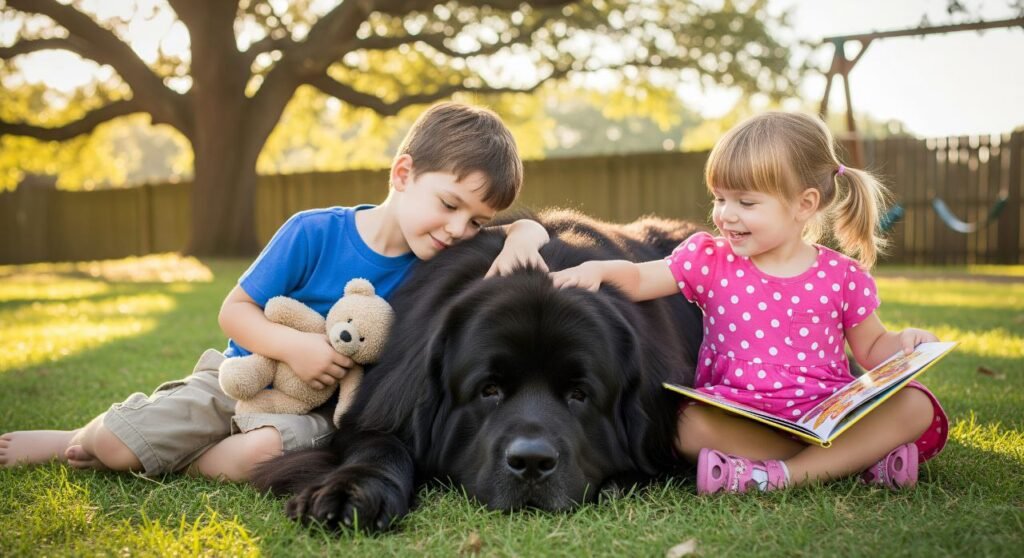
Why People Love Them:
- Patient with kids — they’re famously gentle and careful.
- Loyal to their families — they’ll stick by your side like glue.
- Protective but not aggressive — a calm guardian, not a guard dog.
- Smart and quick learners
- Friendly with other pets
No wonder they’re often used as therapy dogs!
Is Newfoundland dog the Right Dog for You?
YES, if you have:
- A big home or yard
- Children or other pets
- An active lifestyle
- A love for dogs who love water
Probably not, if you:
- Live in a small apartment
- Don’t want to deal with shedding or drool
- Prefer a low-maintenance pet
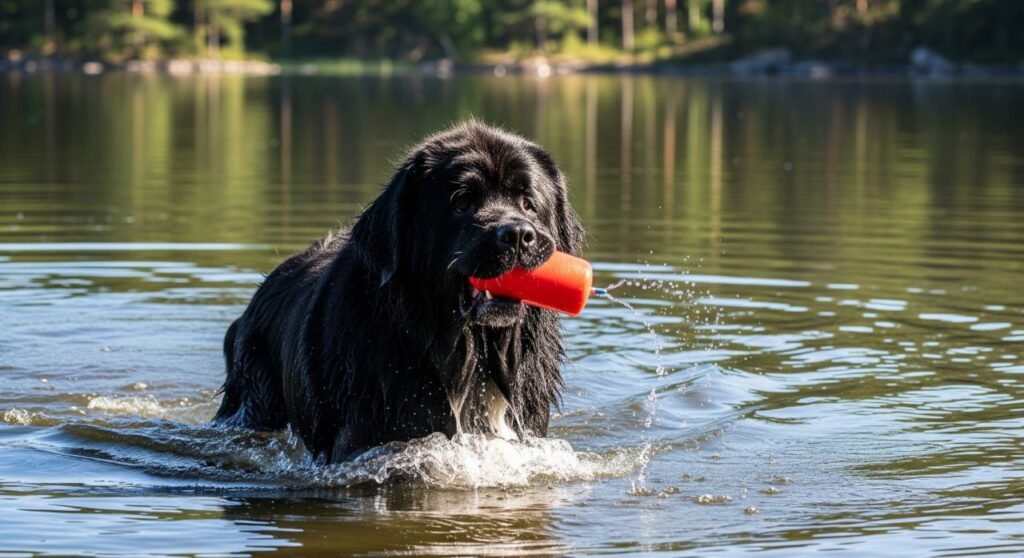
How Much Exercise Do They Need?
Newfoundland dogs are calm, but that doesn’t mean they’re couch potatoes.
- Walks: 30–60 minutes a day
- Swimming: They love it!
- Play: Gentle games (don’t overdo it — they’re prone to joint issues)
Feeding & Nutrition Tips
Big dogs need big meals — but not too much! Overfeeding can lead to obesity and joint problems.
- Feed twice a day
- Go for high-quality food with joint supplements
- Watch out for bloat — avoid exercise around mealtime
Also read: Scooby Doo is not the dog you think he is the truth about his real breed will leave you shocked.
Grooming: Yes, They Shed… and Drool
Get ready for some serious fur maintenance!
- Brush 2–3 times a week (daily during shedding season)
- Bathe once a month or as needed
- Clean ears regularly
- Keep a drool cloth handy — these dogs can slobber!
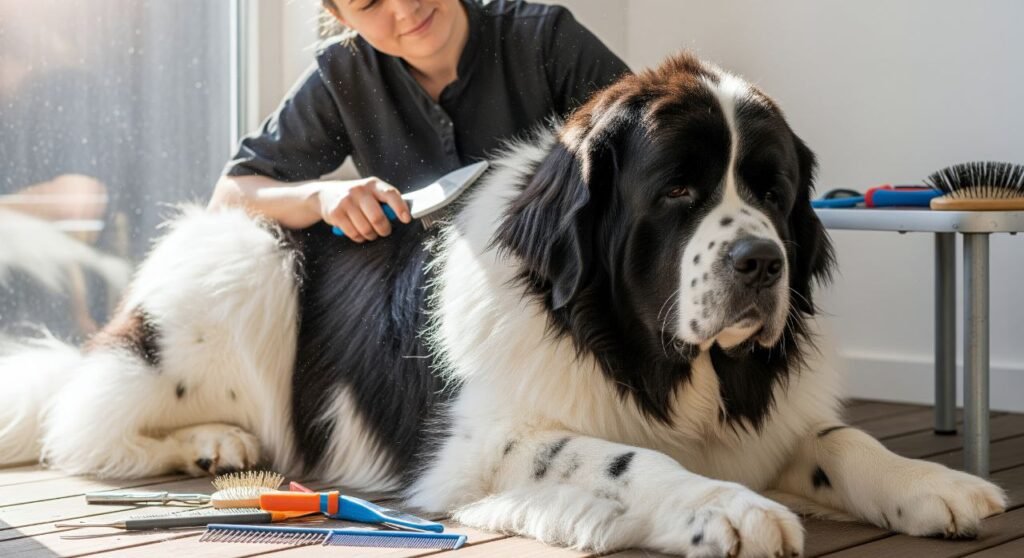
Common Health Issues
Like many large breeds, Newfoundlands can face some health challenges:
- Hip and elbow dysplasia
- Heart conditions like subvalvular aortic stenosis
- Bloat (gastric torsion)
- Kidney or bladder stones (cystinuria)
- Weight gain
Tip: Always go through a reputable breeder who screens for genetic problems.
Training Your Newfie
They’re super smart and eager to please — just start early!
- Focus on positive reinforcement
- Socialize them with people and pets while young
- Enroll in obedience training
- They’re great at learning rescue work, therapy support, or even pulling carts
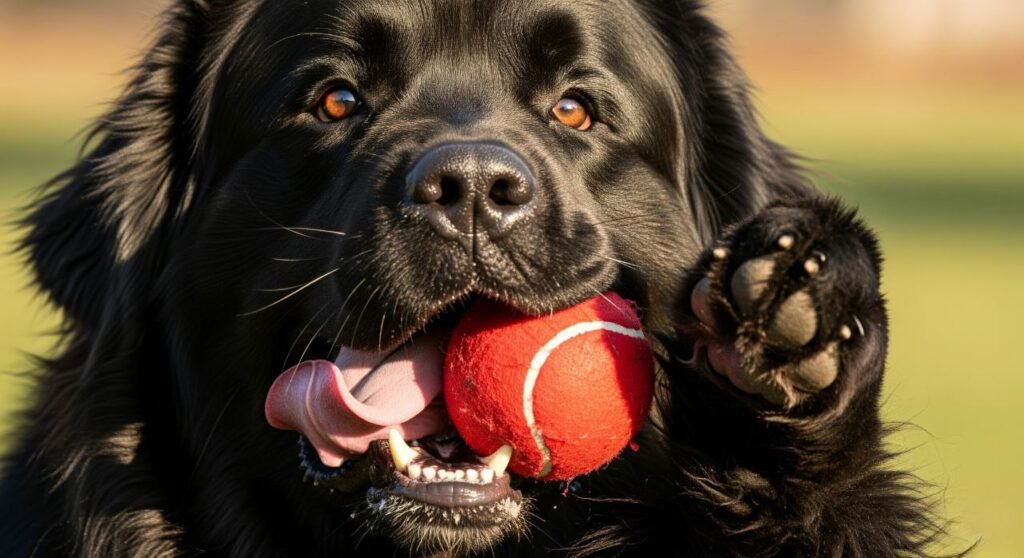
The Perfect Dog for Families with Kids
Newfoundland dogs have earned the nickname “nanny dogs” for a reason. They’re patient, calm, and naturally protective of children. Just remember — they’re huge, so always supervise around very small kids.
Fun Facts That’ll Make You Love Them More
- A Newfie named Seaman traveled with Lewis and Clark on their expedition!
- They have webbed feet for swimming — seriously.
- The dog “Nana” in Peter Pan? Yep, that’s based on a Newfoundland.
- European lifeguards have used them in actual water rescues.
Should You Get One?
If you’ve got the space, time, and heart to care for one, a Newfoundland Dogs can be the most loving, loyal, and life-saving companion you’ll ever meet. They’re big in size and even bigger in love.
Just be prepared for a little fur, a little drool, and a whole lot of cuddles.

